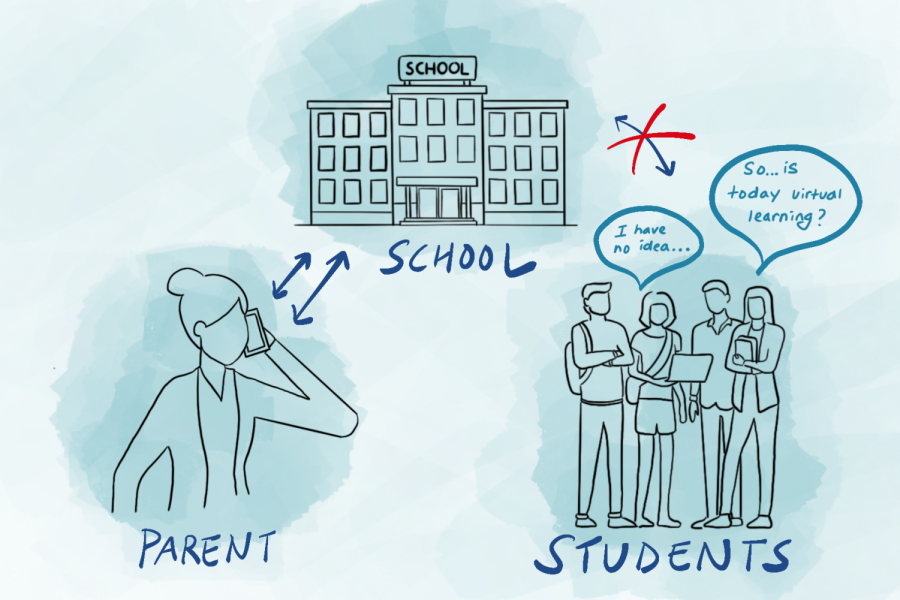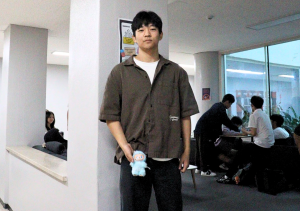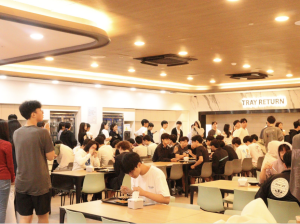Why student-admin communication matters
Mar 10, 2022
During my 10 years at Seoul International School, one aspect of student life has remained largely the same: the need for more direct communication between the administration and the student body. Communication within the SIS community has mostly been limited to contacts between the administration and parents, who serve as conduits of information to students. It is now time for that to change.
Often, school-related news is communicated directly to parents, so it is not uncommon to see students initially unaware of school-related matters. While keeping parents and faculty informed remains crucial, communication between the administration and the student body matters too.
SIS has made commendable efforts reaching out to parents on school-related matters, sending out emails and text messages on changes to COVID-19 policies and parent-teacher conference sign-ups—to name a few. And this information is directly sent to parents for good reason—parents are the ones responsible for informing their children of any school-related information when necessary.
“Parents are the primary point of information when it comes to decisions about the operation of school—so things like close contact and school closures,” Gray Macklin, high school Vice Principal, said. “Information is sent to parents because they are the ones who are responsible for processing and making decisions based on that.”
While parents are fully expected to relay the information they receive to their children, the way the administration communicates with them should also be done with the student body. A direct channel of communication between SIS and students will help to not only promote greater clarity and understanding but also normalize an environment in which the administration can be more informed of students’ concerns.
For too long, the student body has repeatedly learned that a lack of communication between them and the school oftentimes leads to greater confusion. In almost the hallway around SIS, we have likely heard students asking, “Have you not heard that we are going online?” or “Is it true that your parents received the email?” Such prevailing questions can easily lead to even greater confusion.
Promoting greater understanding through direct communication is particularly important now more than ever with school COVID-19 cases changing by the day. Communicated properly and directly, COVID-19-related information—such as school closures and close contact information—can quickly become accessible to students, who may no longer need to rely on their parents for school updates. Students whose working parents are unable to quickly relay information may find direct communication between them and the administration helpful, too.
To some readers, the fact that some students wish to directly receive emails regarding school closures and COVID-19 close contact information may come as a surprise—and understandably so. Students may not have explicitly expressed this desire for there was no direct communication between them and the administration in the first place. As such, the administration may not have ever heard of students wishing to receive direct emails from the school. Moving forward, however, both SIS and the student body can work toward establishing a direct communication channel and promoting greater clarity in understanding.
One small step to address this issue would entail that the administration sends its emails to both students and parents as it has with the most recent school closure in March. Certainly, sending emails directly to the student body is by no means a perfect solution. Many students disregard emails from the administration, notwithstanding the fact that much of the information is directly linked to their lives at SIS. As such, an addition of “c2025, c2024, c2023, c2022” to the recipient line of an email is effective insofar as keeping students who do regularly check their inboxes (a generous minority) informed.
Keeping the non-email reader updated is the responsibility of students, not the school. The student body should, most importantly, realize that clear and direct communication as described above is a two-way process, requiring both administrative and student action. Ultimately, fostering greater communication among the SIS community warrants a collaborative effort from all parties. Acknowledging that the student body has concerns that the school is willing to address is the foremost step toward establishing a direct channel of communication between students and the administration.







